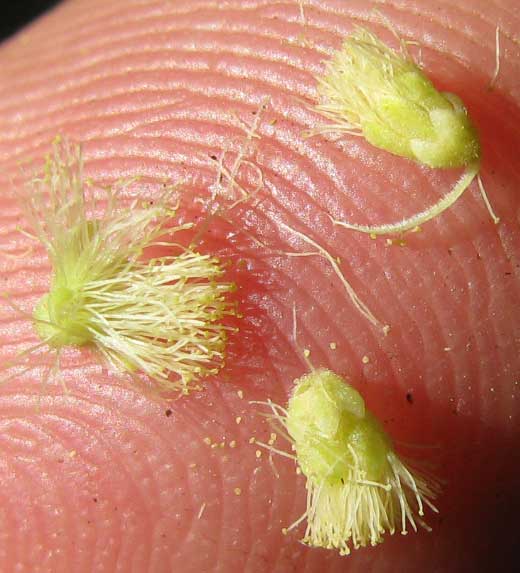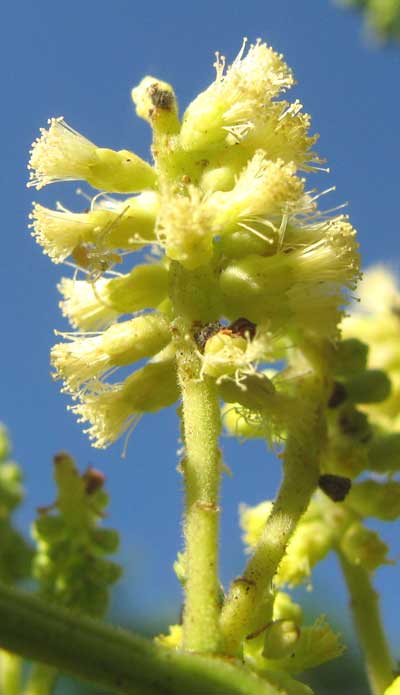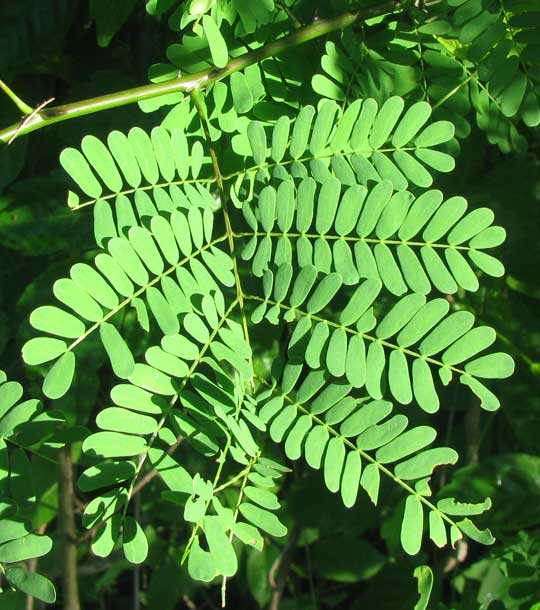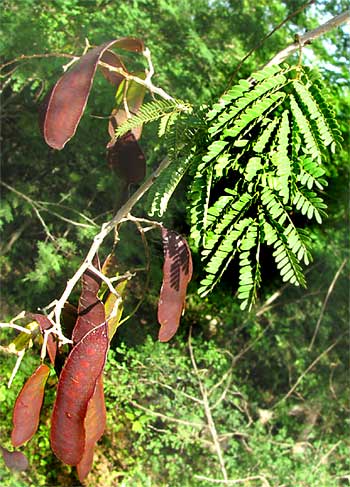Senegalia gaumeri
Excerpts from Jim Conrad's
Naturalist Newsletter
http://www.backyardnature.net/yucatan/gaumer-a.htm
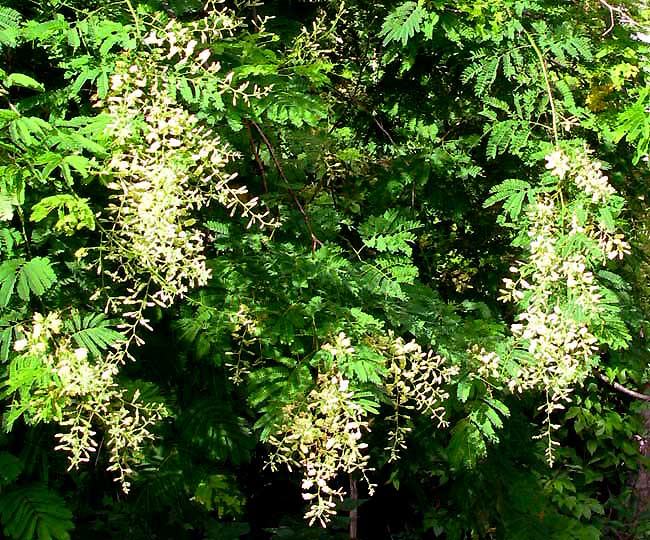 ACACIA GAUMERI
ACACIA GAUMERI
| from the June 6, 2010 Newsletter issued from Hacienda Chichen Resort beside Chichén Itzá Ruins, central Yucatán, MÉXICO A REMARKABLE ENDEMIC ACACIA Jogging along the entrance road in predawn moonlight vague smudges of paleness glowing along the dark walls formed by the roadside forest. By the jog's end there's enough light to see what the smudges are: They're watermelon-size clusters of tiny, yellowish- cream flowers. You can see some during the day above. You can see how tiny the many-stamened flowers are below:
You can see how the flowers are arranged in spikes below:
A twice divided (bipinnate) leaf typical of the acacias and the size of a hand with spread fingers is below:
Some old legumes still hanging on the flowering trees are shown below:
All these features -- the tiny, yellowish flowers with their many stamens clustered in large panicles on ferny-leafed branches (also the branches are protected by short, recurved spines) -- are completely typical of the huge, mostly tropical, mostly Australian, genus Acacia. What's noteworthy about this species is its growth form. I became aware of the growth form one afternoon when I noticed the species' big panicles of flowers and ferny leaves overtopping the Spanish Plum tree behind my hut -- a good forty feet up. Curious about what this acacia's trunk might look like, I scanned the surrounding forest for a trunk appropriately thick for a 40-ft-high tree. The only thick trunk around was the Spanish Plum's. When I traced the high acacia's stems to the ground, its trunk at chest level turned out to be no thicker than my arm, which was incredibly slender for such a tall tree. So, here's an acacia that's almost but not quite a woody vine. In the forest it leans onto or even reclines on other woody species. At the woods' edge it rises up, then cascades back, maybe touching the ground. Some trees standing alone do develop regular trunks. However, if there's something to lean on, this species seems capable of growing high while maintaining a slender trunk. I know of no other Acacia like this. We're talking about ACACIA GAUMERI, apparently bearing no English name, so we'll call it the Gaumer's Acacia. In the whole world it's found only in Mexico's Yucatán Peninsula, in the states of Yucatán, Campeche and Quintana Roo. The thought arises that a tree especially adapted to this part of the world might do well to have a slender, relatively limber trunk... during hurricane season. In the Chichén Itzá area Gaumer's Acacia is abundant, yet it's listed as "Near Threatened" on the IUCN Red List of Threatened Species. That listing appears at http://www.iucnredlist.org/apps/redlist/details/38928/0. Surely the reason it's of concern to the IUCN, despite its being so abundant here, is its tiny distribution. If something bad happens to the species in our area it's in trouble, and in fact there's reason for a bit of concern. My Maya friends point out that Gaumer's Acacia grows only on the region's rich, black soil, not the poorer red soil, which predominates. Of course campesinos looking for good ground for their cornfields prefer rich, black soil, so clearing ground for cornfields impacts Gaumer's Acacia much more severely than one might expect. In Maya, Gaumer's Acacia is called Box Katzin. Katzin or Catzim is a general name applied to several spiny acacia species. "Box" (pronounced BOSH) means "black," so this is "Black Acacia." "Black" because the stem's heartwood is blackish. What a pleasure to meet a new tree, especially such an unusual and distinctive one, and one so exquisitely adapted just to the Yucatán that it grown nowhere else on Earth. We found this species under the name Vachellia gaumeri on the premises of the Palladium Hotel, Quintana Roo, Mexico, 9.4.07. Local name: Box katsin |

